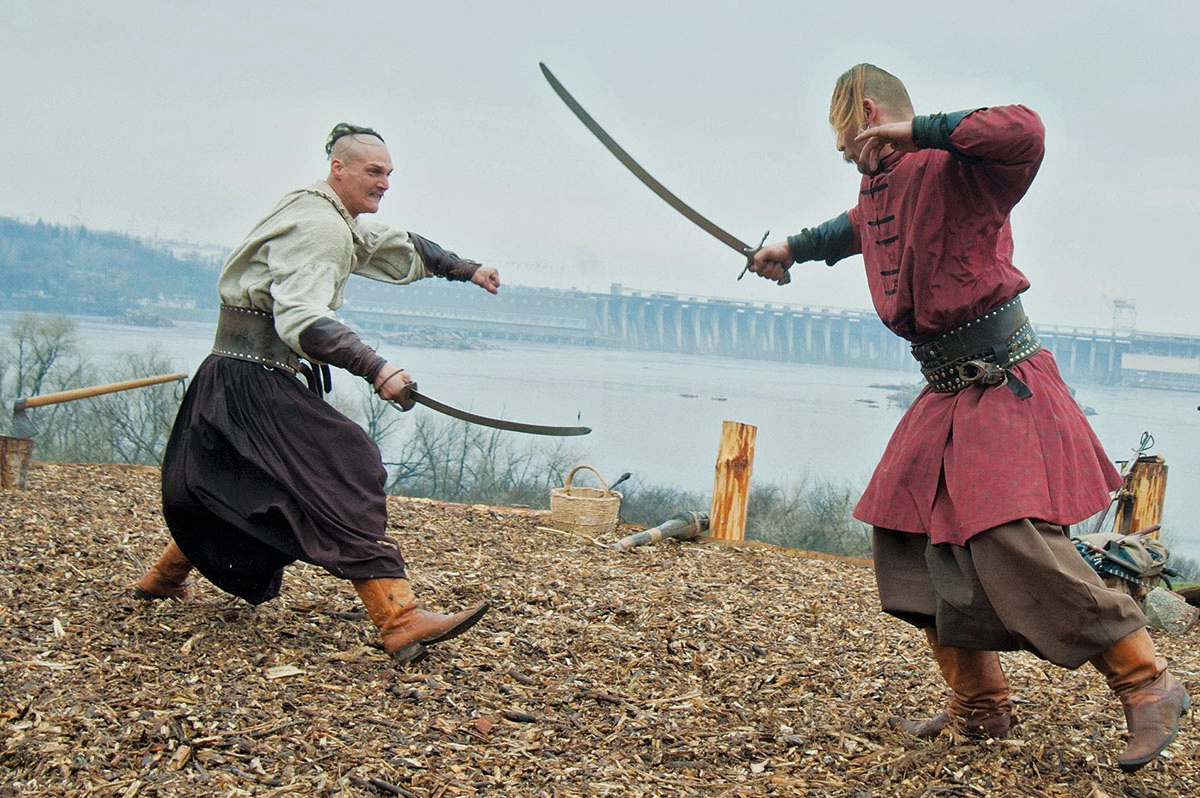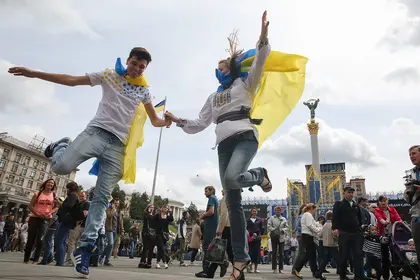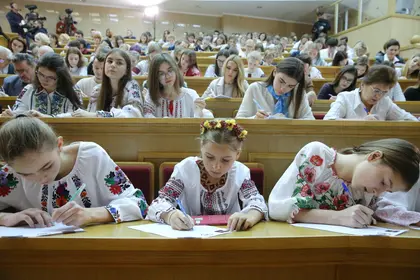Editor’s Note: This is the 10th story in the Kyiv Post’s Honest History series, which aims to debunk myths about Ukrainian history often exploited by Kremlin and other propaganda. The series is supported by the Black Sea Trust, a project of the German Marshall Fund of the United States. Opinions expressed do not necessarily represent those of the Black Sea Trust, the German Marshall Fund or its partners.
One of the strongest links in the toxic chain of events that has bound Ukraine’s fate to that of Russia was forged more than 350 years ago.
Called the Treaty of Pereyaslav, this political maneuver in 1654 was designed to save Ukraine from Polish domination.
It did so, but it also made Ukraine a Russian vassal for centuries.
But for the treaty, Ukraine might have been an entirely different country. Ukrainians could now be speaking no or little Russian, have another religion, and culturally as well as economically be less dependent on modern Russia.
Yet equally, the country may never have achieved independence at all, having remained under Polish control or having fallen under the domination of the Ottomans.
The Treaty of Pereyaslav, struck between Russia and central Ukraine’s rulers of that time, the Zaporizhian Cossacks, was interpreted by the Ukrainian side as a temporary alliance, required to shake off the Polish yoke, and necessary due to the Ottoman Empire’s failure to provide the promised military support.
But for Russia the treaty was a way to extend its control to the west and south, and ultimately eliminate the Zaporizhian Cossacks as a military power. The eastern and southern portions of Ukraine came under Russian sway, being named Little Russia (Malorossia) and New Russia (Novorossiya).
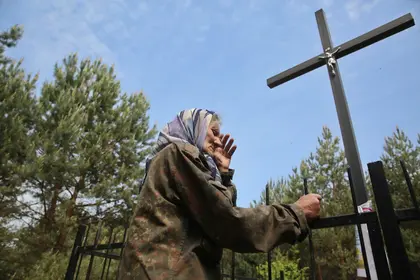
Honest History 8: Volyn Tragedy — Polish, Ukrainian ethnic cleansing still used as political tool
And while those portions of the country were later recognized to be part of Soviet Ukraine and then independent Ukraine, since 2014 the Kremlin has revived its claims to these territories, using their history as justification for its war, which has now killed more than 10,300 people.
Why turn to Russia?
In the 16th to 18th centuries, most of the lands that make up modern Ukraine belonged to four countries: the Tsardom of Russia, the Polish–Lithuanian Commonwealth, the Crimean Khanate, and the Ottoman Empire.
Central Ukraine, however, was under the control of rebellious former Polish-Lithuanian serfs, outlaws and refugees from religious persecution. They had guns and a yearning to be free.
As more of them banded together in settlements for protection, they formed a military force that other powers in the region soon had to reckon with.
They called themselves the Zaporizhian Cossacks, as they settled in the region called Zaporizhya — beyond the rapids, or “za porohamy,” of the Dnipro River — and their capital was Zaporizhian Sich. (“Sich” is a noun related to the Slavic verb sech — to chop or cut. It is associated with the spiked wooden stockades around Cossack settlements.)
The Cossack commander of the mid‑17th century, Hetman Bohdan Khmelnytsky (1595-1657) — now memorialized on the reverse side of the five-hryvnia banknote and in school textbooks as a hero — united the Cossack settlements politically, and took control of central Ukraine.
As leader, Khmelnytsky successfully fought off the forces of the Polish-Lithuanian Commonwealth and created a state with its own military, government, economy and culture — Ukraine.
He was even referred to as Prince of Rus, as after he led an uprising against Polish control in the east of Ukraine he liberated the ancient Rus city of Kyiv, which become autonomous under the Cossack Zaporizhian Sich.
But Khmelnytsky’s remarkable initial successes in the war against the Polish-Lithuanian Commonwealth were followed by a series of setbacks, and an eventual return to domination by the Poles through the forced signing of several treaties that were unfavorable to the Cossacks.
Part of the reason for this was that the Crimean Khanate, which controlled parts of southern and eastern Ukraine, and with which Khmelnytsky had allied himself, had withdrawn its support: The khanate had its own political ambitions and wanted neither the Polish-Lithuanian Commonwealth nor the Zaporizhian Sich to become more influential in the region.
So the hetman started looking for another foreign ally. There were two options: the Ottoman Empire (which ruled over the southwest of Ukraine at the time) and the Tsardom of Russia.
Religion played a key role here: The Cossacks had rebelled against the Polish-Lithuanian Commonwealth partly because it was forcing the population to convert from Orthodox Christianity to Catholicism.
So when the Cossacks had to decide between the Muslim Ottoman Empire and the Orthodox Tsardom of Russia, they with little hesitation accepted the overlordship of Tsar Aleksey Mikhailovich.
Treaty with Moscow
Moscow and the Zaporizhian Cossacks drew up a treaty. To finalize it, a Russian diplomatic mission met with Khmelnytsky in January 1654 in Pereyaslav, now called Pereiaslav-Khmelnytskyi, a small city 90 kilometers to the southeast of Kyiv.
Today, historians have differing views of the true intentions of the tsar and Khmelnytsky in signing this agreement. But most agree that Moscow wanted influence over more land, while the Zaporizhian Cossacks needed military support.
The treaty initially satisfied the needs of both sides: it legitimized Russia’s claims to the ancient Kyivan Rus capital Kyiv, and strengthened the tsar’s influence over the region.
Khmelnytsky, in turn, gained a legitimate monarch’s protection and military support from a friendly Orthodox power.
The details of the treaty — whether it was to be a military union, or make a suzerainty of Ukraine, or completely incorporate it into the Tsardom of Russia — are uncertain, as the original final text has not survived. Translations and drafts of some articles show the wording to have been vague.
Under the treaty, the Cossacks were first allowed considerable autonomy. But soon the Tsardom of Russia began to encroach on their freedoms. Finally, in 1775, under the Russian Empire, the Zaporizhian Sich was absorbed and much of its territory became part of the Russian province of Novorossiya.
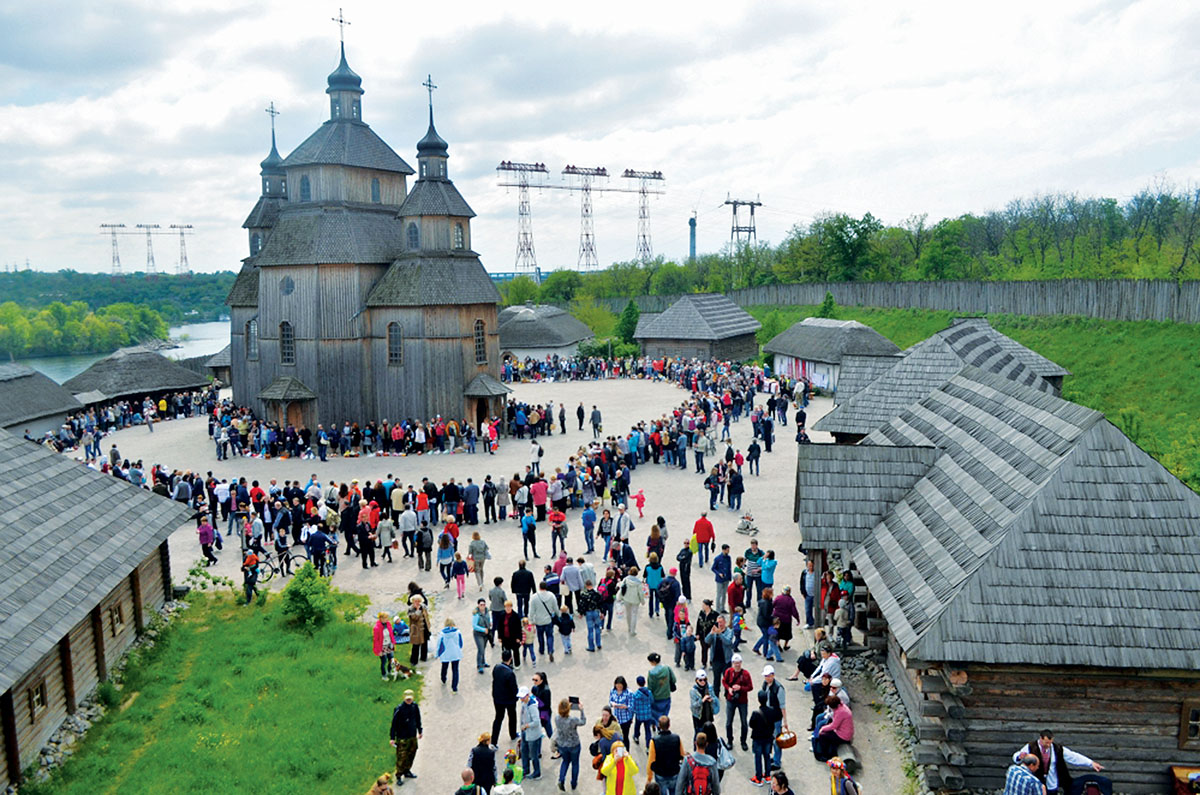
First consequences
The treaty immediately changed the geopolitical map of the region, as Moscow, which had kept out of the wars in Ukraine, began to support the Cossacks against the Polish-Lithuanian Commonwealth.
The commonwealth lost the ensuing war in 1667, and eastern Ukraine came under the direct control of Russia.
About a decade later, with some Cossacks unwilling to remain under Russia, the Zaporizhian Sich split into two semi-autonomous republics: one on the left bank of the Dnipro under Moscow, the other on the right bank in lands controlled by the Cossacks’ former enemies, the Poles.
Poland eliminated the Cossacks as a force by 1680, while Russia used the left-bank Cossacks to help fight its wars up until 1775.
The south of Ukraine — from its modern western to eastern borders — was meanwhile under the control of the Ottoman Empire and the Crimean Khanate. Moscow used the Cossacks to protect Russia’s southern frontier, and with their help, Russia eventually gained control over Crimea, winning the Russo-Turkish War in 1774.
With that, Moscow gained access to the Black Sea, and there was no need for it to maintain a Ukrainian force to guard its southern flank. The Cossacks soon lost their independence, and their semi-autonomous state was abolished by Catherine the Great in 1775.
Some Cossack officers became Russian nobles, others were either absorbed by the Russian army or settled in Turkey. Later, both Russia and Turkey would use the descendants of the Cossacks to form military units for use in wars, but after 1775 there was no prospect of the Cossacks ever again forming an independent state.
By the end of the 19th century, Russia had gained control over most of what is now modern-day Ukraine, including Crimea. Moscow called the lands that the Ukrainian Cossacks had ruled in the 16th and 17th centuries Little Russia (Malorossia) and New Russia (Novorossiya).
Different views
Khmelnytsky, as the head of Zaporizhian Cossacks, was a key figure in the history of Ukraine. He united the Ukrainian people, helped them fight for freedom, and created an independent state. But his decision to ally himself with the Tsardom of Russia was to lead to centuries of domination of Ukraine by Moscow.
Historians differ on their views of the treaty, largely along national lines.
Russian and pro-Russian academics have always been confident that the agreement was favorable to everybody: it saved Orthodox Ukraine while granting Russia the strength to create the Russian Empire in 1721.
The Russians held the treaty in such high regard that in Soviet times, in 1954, as a gift to celebrate the 300th anniversary of the Treaty of Pereyaslav, they transferred Crimea to Soviet Ukraine. When Ukraine became independent, Crimea remained a part of Ukraine.
According to the Soviet interpretation, the treaty resulted from the Cossacks’ aspirations to form a closer union with Russia, not from their desperate desire for a military ally against the Polish-Lithuanian Commonwealth.
Ukrainian historians, in contrast, now see the treaty in 1654 as the beginning of Russia’s domination of Ukraine, which over 300 years turned Ukraine into a Russian colony. They claim Hetman Khmelnytsky had wanted to use the alliance with Russia to strengthen the Zaporizhian Cossacks, but that Russia had its own hidden plans for their territories — they were to be fused to Russia and help form its empire.
During his final years, Khmelnytsky wrote irate letters to the tsar, accusing him of breaking the Treaty Pereyaslav, which suggests that the hetman in the end realized that he had been outwitted by the Russians. But it was too late.
The influential Ukrainian poet and writer Taras Shevchenko, born in Cherkasy Oblast in the Russian Empire, who lived from 1814 to 1861, reflected on the Treaty of Pereyaslav in one of his poems. Ukraine’s national bard had no doubt that Khmelnytsky would have regretted signing the treaty, had he known what was to follow.
If only you, Bohdan the drunk
Could look now upon Pereyaslav
And gaping at that ruined fort
You’d take to drink, and drink a lot!
First stanza of “If Only You, Bohdan the Drunk” by Taras Shevchenko, published in 1859.
You can also highlight the text and press Ctrl + Enter



